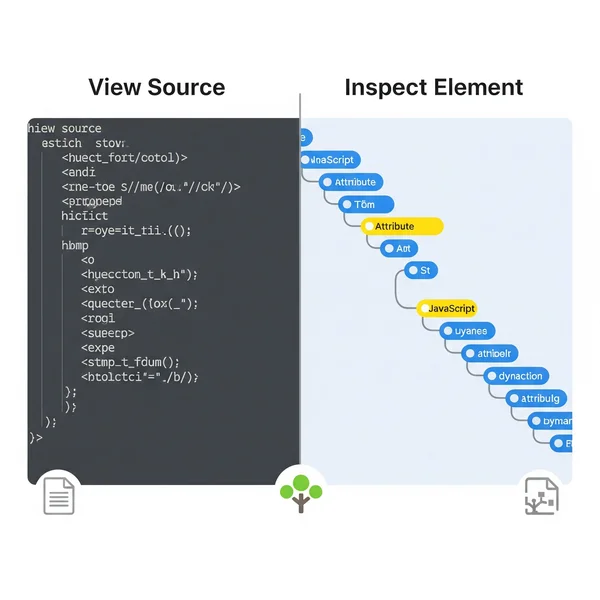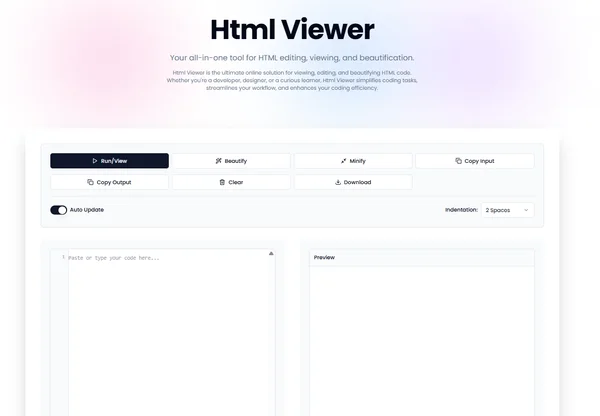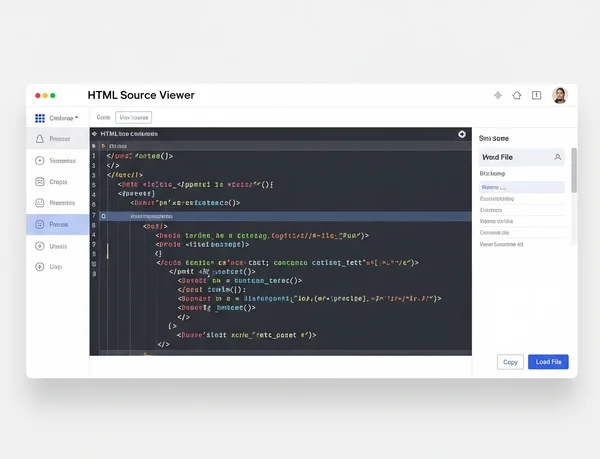Why View HTML Source Code? 5 Key Benefits for Developers
Beyond the Preview: The Hidden Power of Viewing HTML Source
In an era of powerful WYSIWYG editors and instant real-time previews, the classic developer skill of viewing a webpage's HTML source code can seem almost archaic. After all, if the page looks right, why bother digging into the raw markup? Why view html source? The truth is, the ability to view html source is a developer superpower that unlocks a deeper understanding of the web, aids in effective debugging, and provides invaluable insights. This article explores five key benefits of this fundamental practice and how a dedicated html source viewer can make the process even smoother.
Benefit 1: Deepen Your Understanding of Web Structure
The most immediate benefit of looking at source code is gaining a true understanding of web structure. How does this help?
Seeing the "Blueprint" Behind the Visuals
The rendered webpage is the finished building, but the HTML source code is the architect's blueprint. It reveals the exact hierarchy and relationship between elements, unclouded by CSS styling or JavaScript modifications. This provides a clear mental model of how the page is constructed from the ground up.

Learning Semantic HTML from Real-World Examples
How to view html code is also a question of how to learn. By examining the source of well-crafted websites, you can learn semantic HTML best practices from real-world examples. You can see how others use tags like <article>, <section>, <nav>, and <aside> to give content meaning, a lesson far more potent than just reading theory.
Benefit 2: Effective Debugging and Problem Solving
While modern developer tools are fantastic, sometimes the original source code holds the key to problem solving.
Identifying Issues Not Visible in the Rendered View
Certain issues don't show up in a visual preview or even when you inspect html elements. These can include:
- Incorrectly placed or commented-out tracking scripts.
- Misconfigured
meta tagsthat affect SEO or social sharing. - Typos within attributes that don't break the layout but affect functionality.
- Hidden elements (
display: none;) that are still present in the code. Being able tocheck page sourcedirectly reveals what the server originally sent.
"View Source" vs. "Inspect Element": Understanding the Difference
A common point of confusion is the difference between view source vs inspect element.
- View Source (Ctrl+U): Shows you the raw, original HTML document as delivered by the server. It is static.
- Inspect Element (F12/Right-Click > Inspect): Shows you the live, dynamic DOM. This includes any changes made by JavaScript after the page loaded. Both are essential, but viewing the source is crucial for understanding the initial state of the page.

Benefit 3: Learning from the Masters and Competitors
Viewing the source code of other websites is one of the best, and most time-honored, ways to learn.
Deconstructing How Popular Websites are Built
Ever wonder how popular websites are built? View html source and you'll get clues. You can see their DOM structure, how they name their classes, and what kind of meta information they include. This deconstructing websites process is an invaluable self-teaching tool.
Analyzing Competitor SEO Strategies (Meta Tags, Structured Data)
You can gain a competitive edge by analyzing competitor seo strategies. By viewing their source, you can see exactly which keywords they are targeting in their meta tags, what structured data (like Schema.org markup) they are using to get rich snippets in search results, and other on-page SEO tactics.
Benefit 4: Gaining Insights for SEO
Directly related to the last point, viewing source code is a fundamental skill for technical SEO. How to view html code for seo?
Checking Meta Tags (Title, Description) and Social Tags
With a quick source code check, you can instantly verify a page's <title>, meta description, canonical tag, and social media tags (like Open Graph tags for Facebook/LinkedIn or Twitter Cards). This is much faster than using external tools for a quick spot-check.

Verifying Structured Data Implementation (e.g., Schema.org)
Is your product, article, or recipe structured data being implemented correctly? Viewing the source allows you to see the JSON-LD script or microdata in its raw form, helping you verify its presence and basic syntax before turning to formal validation tools.
Benefit 5: Verifying Your Own Code and Implementations
Finally, viewing the source is essential for quality assurance on your own projects.
Ensuring Your CMS or Framework Outputs Correct HTML
If you use a Content Management System (CMS) or a front-end framework, it's easy to assume the HTML it generates is perfect. A quick check page source ensures that your cms framework output is clean, semantic, and exactly what you intended.
Quick Check for Tracking Scripts and Third-Party Integrations
Need to confirm if your Google Analytics tracking scripts or other third-party integrations are present and correctly configured on the page? A quick search (Ctrl+F) within the source code is the fastest way to verify.
How an Online HTML Source Viewer Simplifies the Process
While browser tools are built-in, a dedicated online source viewer can offer a better experience.
Clean, Uncluttered View of Just the HTML Source
Browser "View Source" tabs are functional, but often plain. An online html code reader can provide a clean uncluttered view with syntax highlighting and better formatting, making the code easier to read and analyze.

Easily Viewing Source of Local Files or Snippets
If you have an HTML file on your computer or a snippet of code, you can't "View Source" in the traditional sense. Using an online HTML tool allows you to easily load or paste this code to see both its rendered preview and its source code side-by-side.
Unlock Web Secrets: Make Viewing HTML Source Your Superpower
In a world of high-level abstractions, the ability to view html source remains a fundamental developer superpower. It empowers you to learn, debug, and analyze the web at its foundational level. While preview tools are essential for seeing the result, reading the source is key to understanding the cause.
Make it a habit to check page source and unlock a new level of web understanding. For a straightforward way to view html source from your files, our tool is here to help. What's the most valuable lesson you've learned from source code?
Viewing and Understanding HTML Source Code
Here are some common questions about viewing source code:
-
Is it legal to view the HTML source code of any website? Yes, absolutely. Is it legal to view source code? It is 100% legal. The HTML source code is public information sent from the web server to your browser specifically so it can build the page. Viewing it is a standard and expected part of how the web works.
-
How do I view the HTML code of a website on my browser? How do I view html code of a website? The most common way is to right-click anywhere on the page (but not on an image or link) and select "View Page Source." Alternatively, you can use the keyboard shortcut, which is typically
Ctrl+Uon Windows/Linux orCmd+Option+Uon Mac. -
What's the main difference between "View Source" and "Inspect Element"? This is a key distinction. "View Source" shows the raw, static HTML file exactly as it was sent from the server. "Inspect Element" opens the Developer Tools and shows you the live, dynamic DOM, which may have been altered by JavaScript after the page finished loading. For seeing the original code, "View Source" is what you need.
-
Can an online HTML viewer show the source of any URL? Can online html viewer show url source? Some advanced
online HTML viewershave this capability. However, it depends on their ability to act as a proxy to fetch remote content, and this can sometimes be blocked by the target server's security settings (like CORS policies). For guaranteed access to a live site's source, the browser's built-in "View Page Source" is most reliable. For viewing your own files or snippets, a tool like our online source viewer is ideal.